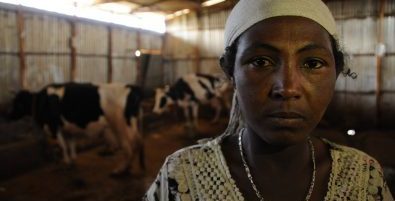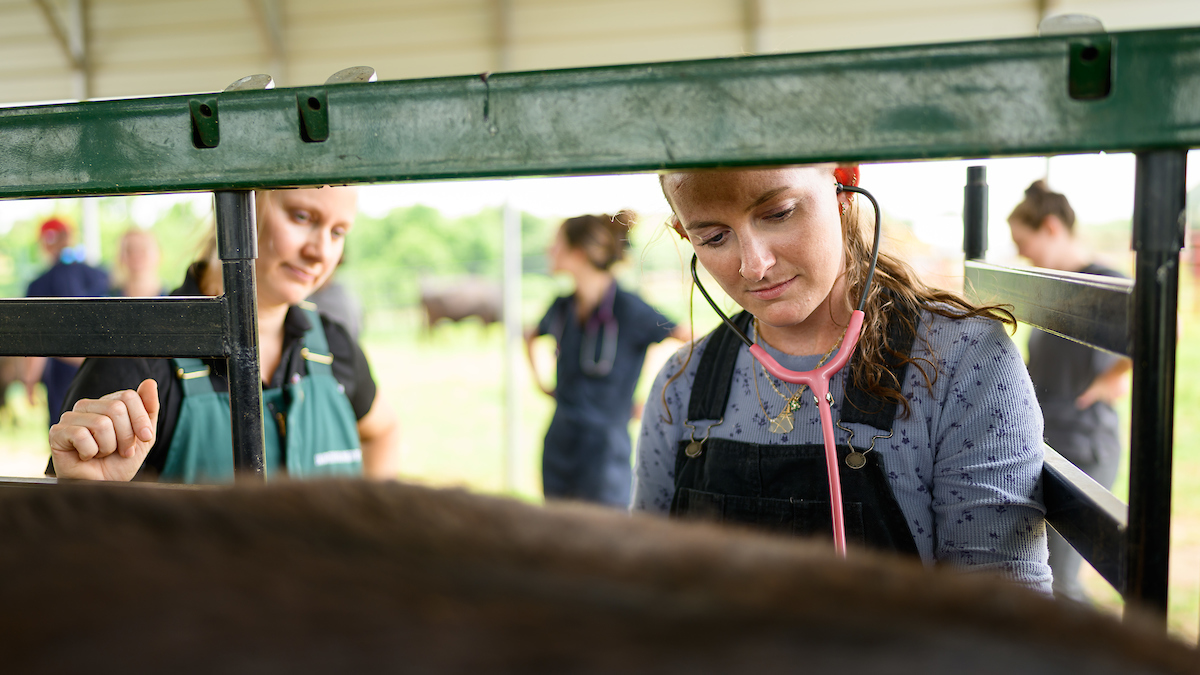Looks that Thrill: CVM Excels in Research Image Contest

One is a stark look into the determined eyes of a farmer in Ethiopia working to eradicate disease that’s threatening livestock — and their owners’ livelihood. The other, an oddly hypnotic video showing the tiny beating heart of an embryonic zebrafish that could one day lead to new treatments for heart disease.
Both are works by the NC State College of Veterinary Medicine community that have taken home awards in the 2017 NC State Research Image Contest, honoring striking and unique showcases of the university’s wide array of scientific endeavours and impactful research discoveries.

Tyler Allen, a Ph.D. student in the CVM’s comparative biomedical sciences program, earned first place in the contest’s video category for graduate students and postdocs for his glowing and pulsating video “Heart of Gold.”
Captured in real time, the zebrafish’s beating heart and flowing red blood cells are treated to fluoresce with color. The video provides a window into how researchers are using the zebrafish to study heart disease, the leading cause of death worldwide. The hearts of embryonic zebrafish have remarkable regenerative capabilities, and learning more could lead to the development of innovative treatments for human heart disease.
[cvm_video id=”OqbCaoQTqrU”]“This video displays the beating heart of an embryonic zebrafish,” Allen says. The video was captured in real time with the heart (red) pumping red blood cells (blue) through its chamber. This zebrafish was genetically modified so that both the heart and red blood cells would fluoresce with distinct colors, allowing for the unique visualization of this intense process. [/cvm_video]
Allen took home first place in the same category last year for “Dangerous Moves,” which showed cancer cells moving through fluorescent blood vessels.
“It’s exciting to be recognized for this award, especially since the other entries were all amazing,” he said.
Second place in the faculty category for photography went to Andy Stringer, CVM’s director of global health education and a clinical assistant professor in the Department of Population of Health and Pathobiology, for his portrait of Wude, an Ethiopian farmer researching the impact of zoonotic diseases on livestock owners and developing ways to increase food safety and improve nutrition.

Stringer, who also directs NC State’s Global Health Initiative, founded the Health and Livelihoods research group, or HEAL, which uses a One Health approach that links the health of people to the health of animals.
Milk, for example, provides essential nutrients and proteins for children. Stunting of growth, health and cognitive development affects 25 percent of children under 5 years old worldwide, Stringer said.
“It is fantastic to be recognized in this contest which highlights important research work here at NC State,” he said. “My image helps raise awareness of the global engagement of research here at the CVM, in this case tackling one of the grand global challenges: food security.”
The NC State Research Contest, launched last year, is open to all faculty, staff, graduate students and postdoctoral researchers at the university. It is funded by NC State’s Graduate School and Office of Research, Innovation, and Economic Development, with support from University Communications and the College of Sciences.
The contest is divided into four general categories: graphics and illustration, microscopy, photography and video. This year’s winning submissions included works from a range of NC State departments, including marine sciences, entomology and plant pathology, and the College of Design.
This year’s winning submissions depicted everything from a map of Mars and the diversity of bed bug populations in North Carolina to cellular appendages of leaves and self-folding materials.
For more information on this year’s contest winners, go here.
~Jordan Bartel/NC State Veterinary Medicine


